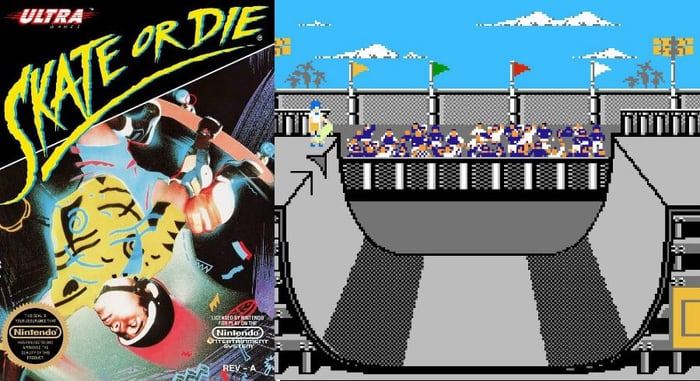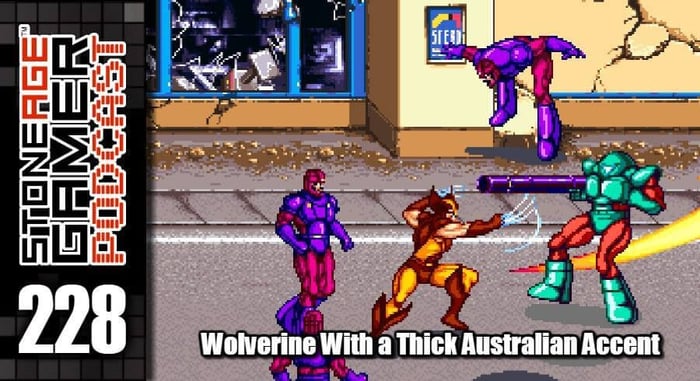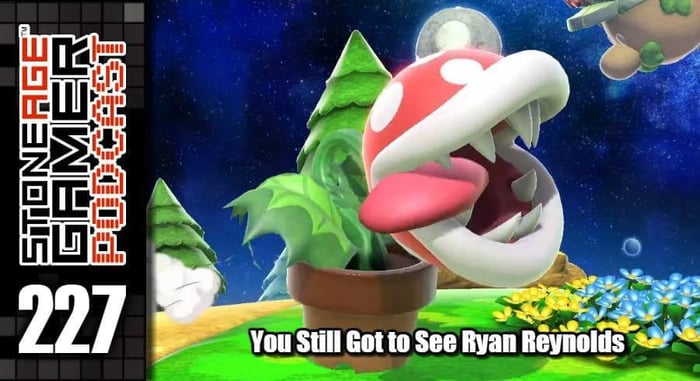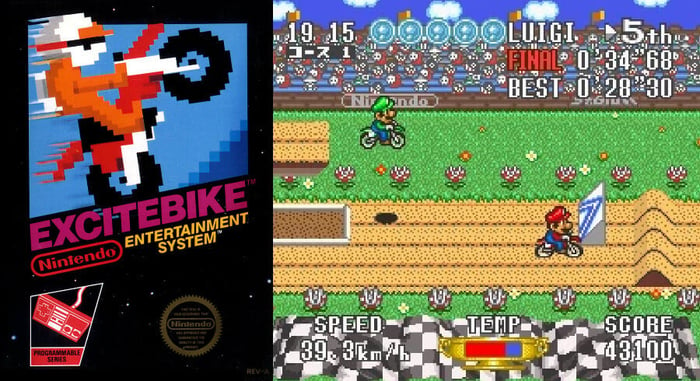
16-bit Sequels that Never Were Vol. 2
Last week I talked about ten games of the 8-bit era that missed out on a traditional 16-bit evolution. Game series evolving over time has been on my mind a lot lately thanks to Mega Man 11, and when I came up with the idea to write this I figured I’d find 5 games and move on. Well, I found twenty, so here’s the other ten. (Again, in no particular order).
Blades of Steel
Arcade-style hockey games have always been incredibly fun, but back on the NES, you were either on team Blades of Steel or team Ice Hockey. I adore Ice Hockey, but my heart has always leaned toward Blades of Steel because for me the game is just more fun. I spent a crazy amount of time playing sports games on NES, crazy because I’m not much of a sports fan. But sports games back then were more focused on what made them fun than what made them hyper-realistic. Once EA’s NHL series took hold, that’s basically all we got in the realm of 16-bit hockey games of note. Well, there was NHL Stanley Cup, but that game is weird. What we needed was a fancy, fun, and easy to play 16 bit sequel to Konami’s Blades of Steel. Improve the voicework, make it prettier, get more of that awesome Konami music in there, and keep it simple and fun. Honestly, the same could be said for Double Dribble while we’re here. But I like hockey more. Konami did try to bring back the brand during the 32-bit generation, but it lost its soul by that point.
Rygar
Honestly, pretty much all of Tecmo’s NES games would have made for some excellent 16-bit sequels, but besides Ninja Gaiden, Rygar is at the top of the list of games that would have been incredible to see make the transition to the next generation. Where the arcade Rygar kept things more action-oriented, the NES iteration was an awesome, almost-Metroidvania type of game with tons of cool monsters, interesting locales, and weird-yet-unforgettable music. Between the grappling hook and that awesome Diskarmor weapon, Rygar had all the makings for a phenomenal ongoing series, and looking at how games like Super Metroid game out, it’s not hard to imagine a sequel to Rygar being really, really cool. Heck, the arcade version was basically 16-bit, so it’s already proven that this game’s world and characters look great in that style. While the franchise saw a reboot on the PlayStation 2, it would have been more impactful had the original game not become a footnote in gaming history by that point. I still have my fingers crossed that someone makes a fresh new 2D Rygar game someday.
Wizards & Warriors
Another of Rare’s classic properties that’s seemingly lost to the ages, Wizards & Warriors (particularly the second one) was known for having some of the best graphics on the NES. The third game was a bit of a mess, but introduced a super-interesting guild system to the series as well as an open world to explore. I would have given any amount of money to see Malkil’s magic in 16 bits, and it’s still astonishing to me that there’s never been a revival of this brand. Kuros was such a memorable knight with possibly the best death animations in the business, but after 3 NES games and 1 Game Boy game, his career was over, and talk about a darn shame. 16-bit consoles could have breathed fantastic life into the worlds of Wizards & Warriors, combining the platforming action that worked in the first two games with the new exploration and guild elements introduced in part 3. Wizards & Warriors wasn’t even a part of Rare Replay. This series deserved better.
Clu Clu Land
I know, I know, but hear me out. Clu Clu Land is intensely bizarre. Everything about it, from the visuals, to the game’s objective, how it controls, and even its weirdo name, don’t make a lick of sense. When you first play it, it seems dumb, and to an extent it kind of is, but if you stick with it, at a certain point it starts to make sense what game they were trying to make, and it’s actually kind of fun. I heartily recommend playing through all of its stages in NES Remix. But back to my point, there was something there in Clu Clu Land, and Bubbles (the game’s main… protagonist, I guess?) should have gotten a second chance outside of a cameo in an obscure Donkey Kong spoinoff. There really isn’t much else out there quite like Clu Clu Land, but with a name change, some fresh visuals, and some refinement to the gameplay itself (especially with the additional buttons available on the SNES controller) some sort of proper follow up to this Black Box game could have turned into one of Nintendo’s C-tier franchises. I know that doesn’t sound like something to necessarily aspire to, but it is. There’s a niche for this kind of thing, and the SNES would have been the perfect place for it. Mode 7 was all about rotation, and this game is ALL ABOUT ROTATION! But hey, the Switch would be perfect for it too.
Skate or Die
Man, Skate or Die was HUGE when I was a kid. All my friends had this game and we all played it whenever we got tired of not being any good at real skateboarding. Skate or Die 2 was cool too, as was Ski or Die… more or less… but what happened to skateboarding games during the 16-bit generation? I seem to remember a game called Skitchin’ for Sega Genesis, but I’m drawing a blank past that. The following generation brought us a cavalcade of skateboarding sims after the runaway success of Tony Hawk’s Pro Skater, but EA completely neglecting their hit skateboarding franchise when there was a pretty obvious lack of the genre on the then-current gen platforms is just nuts! Skate or Die 2 was already pretty bananas, and I for one would have loved to see them take things even further with their silly narrative. Rodney, Lester, and Icepick deserved 16-bit renditions, darn it! As for the game itself, there was probably some fun to be had with Mode 7 effects on the SNES, but they could have also just continued the style they set up in the first two games but refined it and made it prettier. I would have bought it.
Track & Field
The original Track & Field is legendary. It was the ultimate button masher in the arcade, and you always knew when someone was playing it because you could hear it throughout the entire arcade. The home ports were pretty great too, and the sequel was fantastic. Really just classic Konami through and through. Olympics games used to be so much fun, between the Track & Field and EPYX Games titles, but there wasn’t a lot of that kind of stuff in the 16-bit era, and what there was wasn’t up to the standards of fun that Track & Field set. If you go back and look at Track & Field II on NES, it’s a really nice-looking game with some impressively large sprites. It was also remarkably fun. A 16-bit version would have been great, especially considering what the folks at Konami pulled off during the SNES era. They’ve tried to bring back the Track & Field brand a few times before, but the mid 90s was the time to keep it alive in the first place.
Cobra Triangle
Ah yes, another Rare masterpiece from back in the day. This game freaking rules, but like a lot of games from the NES-era, it can be a little rough around the edges. It’s tough as nails, and at times the graphics were a little too ambitious. (This game’s got a lot of flicker) But it came together brilliantly. There’s no story in the game. You’re a boat with a set of helicopter blades that come out of your roof, and you boat around, shooting stuff, collecting pods, disposing of mines, saving people, jumping waterfalls, frying incredible-looking monsters, and all sorts of other stuff. It’s straightforward fun, and a 16-bit sequel would have been nothing short of astounding. Just the ability to work with more sprites on screen at the same time would have potentially opened a sequel up to all kinds of possibilities. Similar to the jump from RC Pro-Am to RC Pro-Am 2, they could have played with elevation a bit, giving certain areas waterfalls and rapids to traverse. The possibilities for a sequel were endless here, and I’m so sad it never came to fruition, especially when thinking of how talented the folks at Rare were during the 16-bit generation. At least the original can be played on the Rare Replay of you’ve got yourself an Xbox One.
Pro Wrestling
I can’t believe it’s taken this long for this game to even become playable on a modern console. Thanks to the Switch though, the wonder that is Pro Wrestling can be experienced by a whole new generation of fans. But while I still think the game’s super fun, even I have to admit that it hasn’t exactly aged flawlessly. That just drives home the point that this game should have been a recurring franchise just like Punch-Out!!, though. Seriously, the cast of wrestlers in this game is so memorable people still talk about them to this day! I may not be a fan of actual pro wrestling by any stretch of the imagination, but pro wrestling video games can be an absolute blast, and NES Pro Wrestling is a perfect example of that. Now imagine what beefed up renditions of these great character designs could have looked like on the SNES. Imagine what other wacky characters they could have come up with to fill out the roster. Imagine how freaking good this game could be now if it had evolved generation by generation like so many other franchises had! Imagine if Pro Wrestling had stuck around well enough to have a character in Smash Bros.! It’s heartbreaking. At least with the game showing up on the NES Online service there’s hope we could see more of it in some form someday, but man, there REALLY should have been a Super Pro Wrestling.
Balloon Kid
I bring this game up a lot. Mostly because I think it's absolutely brilliant and deserves a spot in the pantheon of classic Nintendo platformers right next to, let’s say Kirby and Kid Icarus. Balloon Kid is basically a sequel to Balloon Fight. They took that game’s mechanics and world and expanded on it enough to give it characters, a loose plot, and make an entire single player platformer out of it. And it’s great! Alice (not necessarily the creepy-looking Alice on the game’s US box art) is an adorable character design. And how cool is it that there is a genuinely great and original platformer about a big sister saving her little brother? Why didn’t this become a thing? The game’s basics are remarkably sound. Controlling a character like this is challenging in the fun kind of way, and if they applied the same kind of Nintendo magic to evolving this game as they did Mario, Metroid and Zelda, they would no doubt have another solid franchise on their hands. Expand the adventure mode, make the graphics bold and beautiful, include a classic Balloon Fight mode in addition to Balloon Trip, it would have been great.
Metal Gear
I guess I get why Metal Gear never hit SNES. Kojima wasn’t exactly happy with the NES version of his MSX masterpiece, and its NES-only sequel Snake’s Revenge didn’t even have his hands on it at all. But that game didn’t exactly sell poorly, and it’s not like Konami had a problem making sequels without Kojima on board if they wanted to, and still, they didn’t. It wasn’t until the PlayStation that Kojima was able to really capture his vision for the series, but I still would have absolutely loved to see what he or anyone else could have pulled off with an SNES or Genesis at their fingertips. There’s a lot of fun to be had with 2D Metal Gear games, which is proven quite well in the excellent Metal Gear Solid for Game Boy Color. We may never know what could have been, but whenever I imagine a 16-bit Metal Gear, it’s pretty exciting. That generation wasn’t exactly brimming with stealth action games. 16-bit Metal Gear would have been and sold great.
And that’s it for now. I didn’t think I was going to find this many, but it really was easier than I thought. In the world of modern games where if a title is successful a sequel is all but inevitable, it’s crazy to think of all the franchises that fell by the wayside, many of which never saw a proper return at all. It’s strange to think that game evolution like that just doesn’t happen anymore, but back in those days, wishing for a new Metal Gear and Ninja Gaiden I guess isn’t so different than it is today. What do you think? Did I miss any 8-bit classics that should have gotten 16-bit sequels? Let me know!





